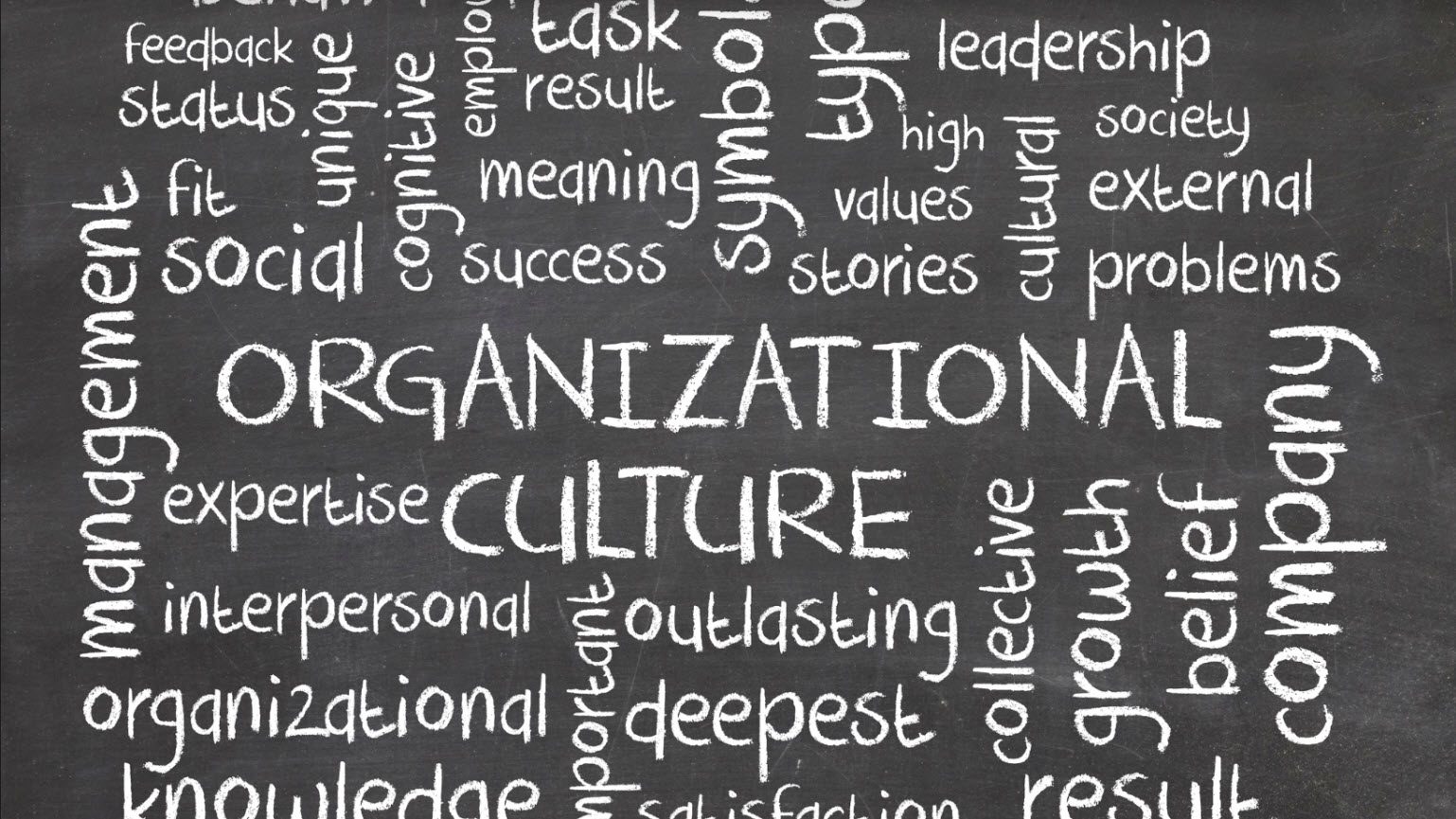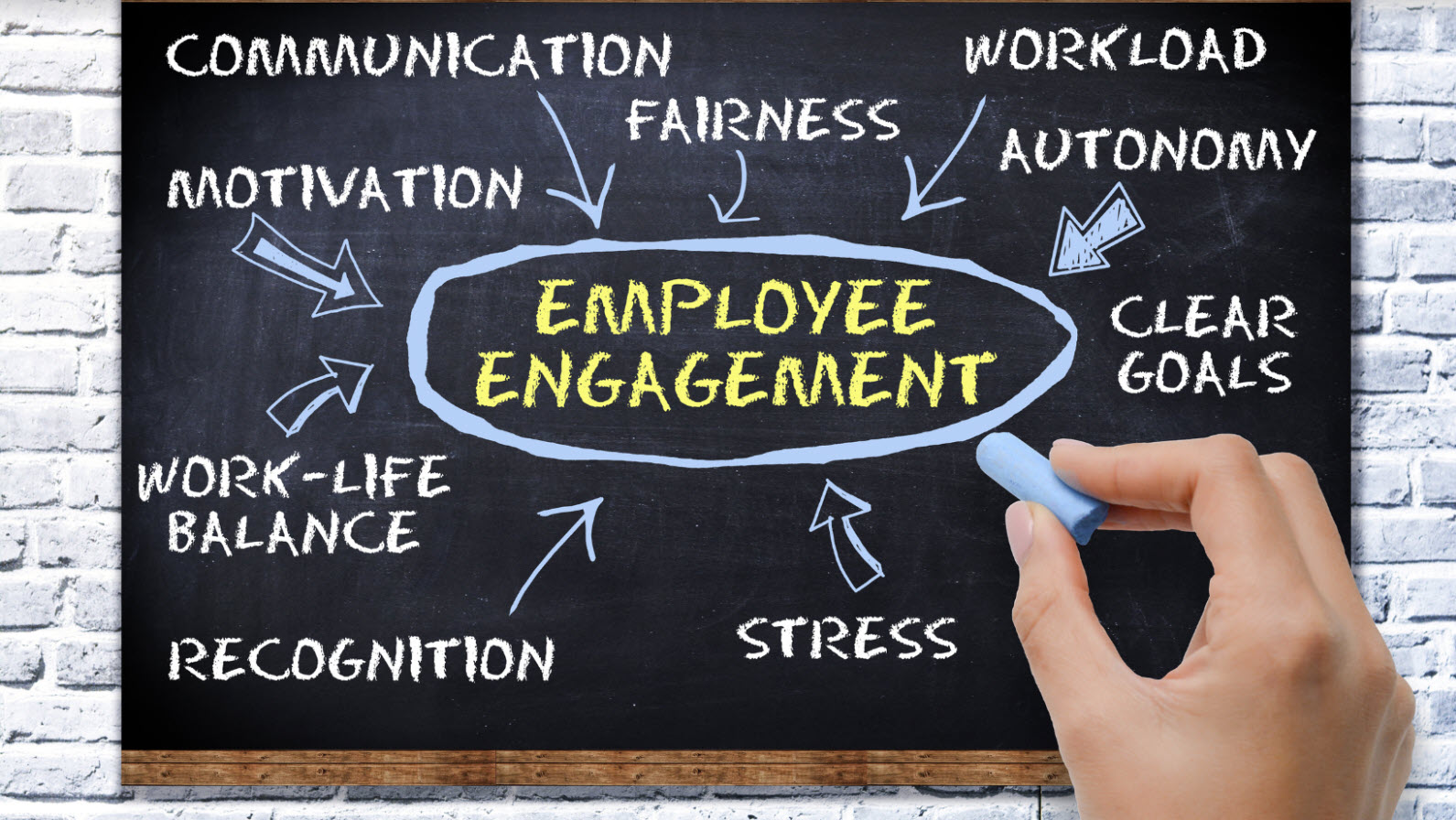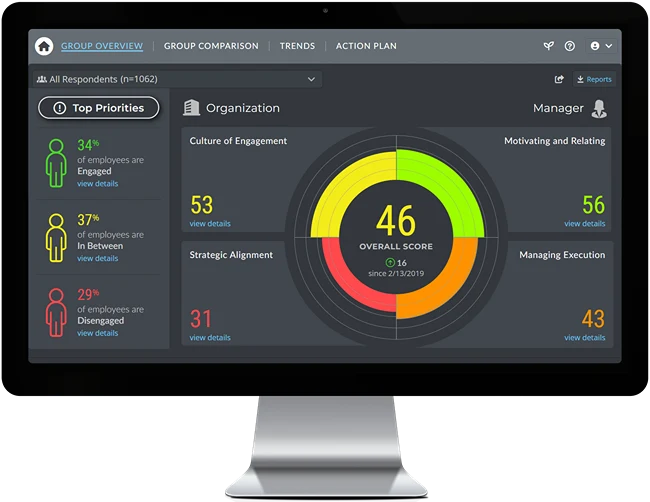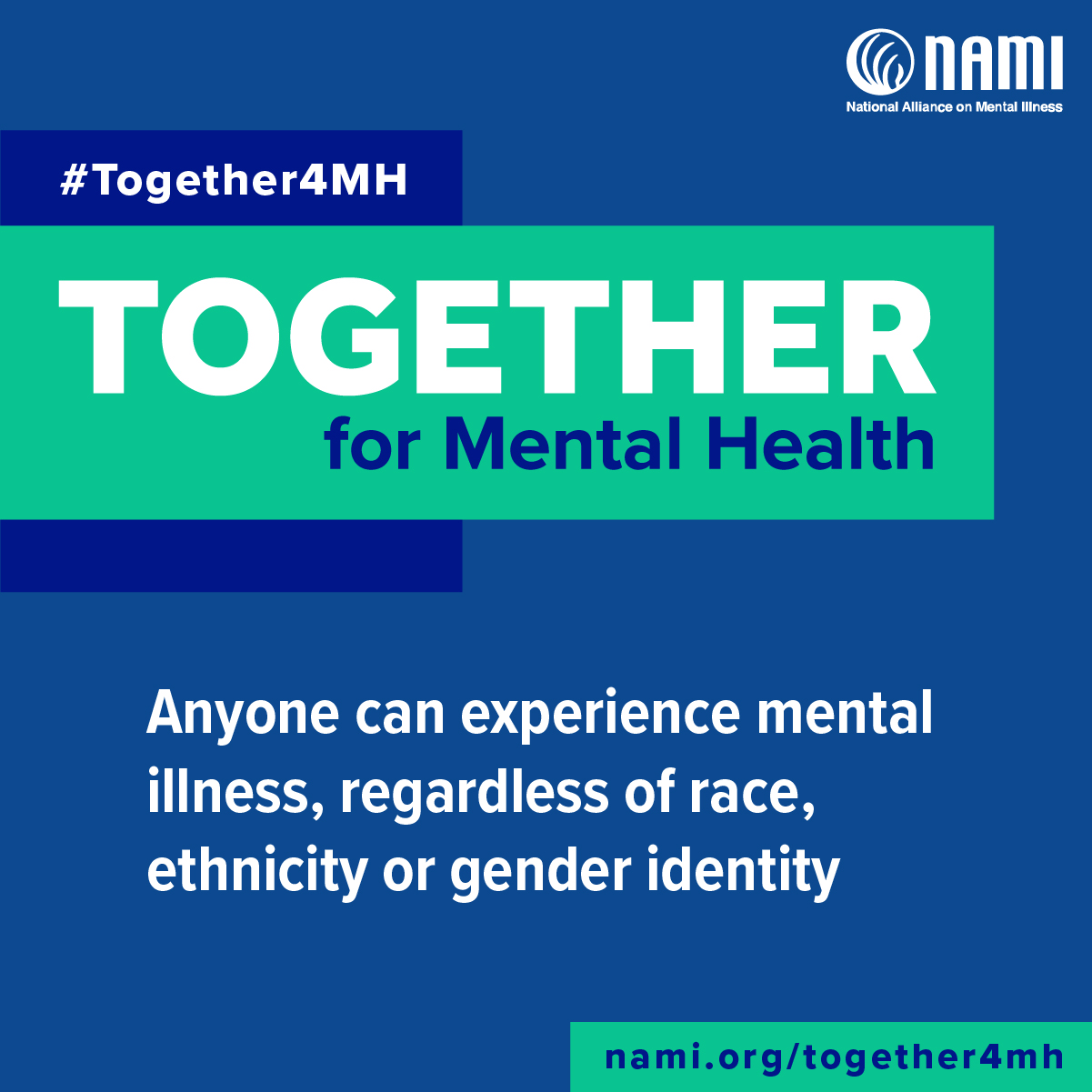Employee Engagement Survey & 360-Degree Feedback Blog
Engage. Develop. Succeed.
Welcome to The CustomInsight Blog, your trusted source for insights on boosting workplace morale and productivity. Discover how 360 feedback, DEI initiatives, employee engagement, and pulse surveys can transform your organization. Get actionable strategies to implement today with our expert guidance.

Things Every Organization Can do to Prevent Employee Turnover:
Employee Engagement Strategies to Retain Top Talent
5/8/2025
Healthy turnover is expected. However, when good employees leave, morale drops, productivity slows, and organizations pay a hefty price in direct and indirect turnover costs. In a previous blog, we quoted Gallup. They write, “An astounding 42% of employees who voluntarily left their organization in the past year report that their manager or organization could have done something to prevent them from leaving their job.”

What Are the True Costs of Employee Turnover
Understand the Hidden Costs of the Employee Revolving Door
4/22/2025
Employee turnover is more than inconvenient. According to Gallup , “Employee turnover costs businesses $1 trillion each year.” This might seem like an exaggeration. Where do they get these numbers? Turnover affects everything from recruitment costs to team morale, and the impact can be felt long after an employee leaves. Here are some costs associated with turnover. Recruitment Costs:

How Absenteeism and Presenteeism Affect Productivity
The Hidden Costs of Superbowl Monday (And Mondays, in General)
4/8/2025
According to Kaiser Permanent , U.S. employers face an annual cost of $2,945 per employee due to productivity losses caused by absenteeism and presenteeism resulting from chronic illnesses and injuries. What is the difference between absenteeism and presenteeism? Absenteeism: Absenteeism is defined as being away from work without good reason or beyond what could be considered an acceptable amount of time. This isn’t your regular sick day, instead a habitual absence from the job by employees.

Engaged Workforces Experience Less Absenteeism
The Relationship Between Employ Engagement and Absenteeism
3/28/2025
Chronic absenteeism is more than just an occasional missed day—it’s a silent productivity killer that affects an organization’s morale, efficiency, and bottom line. It can be caused by many reasons: illness, injuries – both chronic and acute, childcare and eldercare, burnout, and depression. And, it costs organizations billions of dollars each year in productivity. What are the direct and indirect costs of absenteeism?

The Cost of Employee Disengagement
3/4/2025
In a previous blog, we shared this statistic from Forbes : 8.8 trillion is the true cost of employee disengagement around the world. This number isn’t random, and it takes into account number of factors, both direct and indirect. Direct Costs of Disenagement: Absenteeism Turnover (recruiting, hiring, and onboarding new employees) Overtime (for when an employee doesn’t show up)

How to Deal With Layoff Anxiety
2/27/2025
The fear of losing your job can be debilitating and affect every aspect of your life. As a country, we’re smack in the middle of waves of loss and uncertainty. Money writes that, “U.S. workers are starting off the year feeling pretty glum about their job security.” That may be putting it lightly. Right now you may be feeling anxious and incredibly vulnerable about your and your family’s well-being. What can you do?

How Employee Engagement Increases Productivity
2/18/2025
We’re back to the stats. In our previous blog post, we shared a Harvard Business Review study that says, “Organizations with higher levels of engagement report a 22% increase in productivity.” That’s pretty bold. Why? Simply put, engaged employees are more invested in their work. How, though, do these two ideas connect? The Link Between Employee Engagement and Productivity:

7 Employee Engagement Statistics Worth Considering
2/4/2025
Numbers can tell the story about why employee engagement matters. Here are some surprising statistics about employee engagement. Organizations with higher levels of engagement report a 22% increase in productivity. HBR Engaged employees are more motivated, committed, and aligned with organizational goals. They tend to take initiative, collaborate effectively, and produce higher-quality work, which directly boosts overall efficiency and output.

Is DEI Dead?
DEI, Merit-Based, and Loyalty Hiring
1/28/2025
With the new administration, there have come some sweeping changes, one being the abolition of DEI initiatives in the federal government. Over the years we’ve discussed the benefits of DEI initiatives to improve an organization’s productivity, and we believe it’s important to understand the differences and possible overlap with DEI, merit-based, and loyalty hiring. The History of DEI:

How Engagement Surveys Increase Employee Engagement:
When done right!
1/21/2025
In the previous blog post we discussed how engaged employees improve the customer experience, leading to happy, loyal customers. It seems pretty straightforward, but the road to employee engagement can be fraught with obstacles: meetings, poor communication, lack of leadership support, lack of growth opportunities, and we can go on and on and on. That said, there’s a critical first step toward identifying those obstacles and getting key information on how to address them and improve employee engagement in your organization. Start with conducting an employee engagement survey.

What is the Secret to Happy, Loyal Customers? Engaged Employees
1/7/2025
There is nothing certain except for uncertainty, and we can’t be sure what’s to come in 2025. We are certain, however, that a positive employee experience directly relates to happy customers. Simply put, employee engagement is a strategic advantage for businesses. Not convinced? Here’s how employee engagement transforms the customer experience: Improves Customer Interaction Quality

Resolve to Increase Employee Engagement in 2025
3 Achievable New Year’s Resolutions for HR Departments of One
12/17/2024
Human Resource departments for small organizations might consist of one person. And that person can be spread pretty thin on a really tight budget. Your HR department might be you – the business owner. It might be your office manager, or the Lone HR Professional in a small organization. It often feels like when there’s blame to be had, people love pointing at HR. And with the bad rap HR gets (think Toby Flenderson from

How to Improve Employee Engagement During the Holidays
The 12 Gifts for Employees in December
12/3/2024
December is here! It’s the season of holidays and holiday bustle, never-ending cookie swaps, work deadlines and budget meetings, social and family commitments, sneezes, flus, and, often, stress. Add the random office decoration or ugly sweater competition, and your employees might feel more stress than connection. We’re not trying to Grinch our way through the season, but we do know what a financial, physical, and emotional strain the end of the year can be for many. So, to keep your employees’ spirits up, we thought we’d jump on the holiday bandwagon and bring you a little musical, engagement fun. What do your employees really want this holiday?

Employee Engagement and Work-Life Integration:
Achieve Success and Shift to Work-Life Integration During the Holidays and Year ‘Round
11/19/2024
Is work-life balance a thing of the past? (We certainly discuss it a lot on this blog). In HR circles, work-life integration (WLI) is emerging – the idea that work is a key part of life and vice-versa, and finding space for both can improve the employee experience, employee engagement , and performance. Though we’re not quite ready to let go of work-life balance, we believe it’s important to recognize these growing trends in organizational structure.

What Does it Mean to Be a Good Boss?
Good Leadership is the Core of Employee Engagement
11/5/2024
We discuss the value of great leaders a lot. In fact, managers, immediate supervisors, and organization leaders are the single biggest variable when it comes to setting the tone for the employee experience. So, do employees quit their bosses? Well, yes. (This is backed by statistics and studies.) So, conversely, will employees stay at work because of great leadership? Research shows

Villainous Workplace Behaviors
How to Identify Toxic Behaviors and Combat Them
10/22/2024
There is no great film or story without a great villain or conflict. But when the drama and villainous behavior seep into the workplace, your organization culture suffers. Absenteeism due to illness will increase; productivity will decrease; top talent will leave. And people will, unfortunately, loathe coming to work. In a month of monsters and villains, we want to share the top toxic behaviors of coworkers and/or managers and how to combat them.

How to Improve the Employee Experience:
8 Strategies That Work
10/8/2024
While it may seem like the latest HR buzzword, employee experience goes beyond the latest business trends. As we continue to study what drives organizational success, it's clear that creating a positive employee experience is fundamental. “Employee experience has become a critical element of the work experience as employees believe (find meaning), become (learn and grow), and belong (connect with others). Employee experience is a lead indicator of customer experience and investor confidence.”

How to Upskill Your People and Win at Employee Engagement
9/23/2024
“Continuous improvement is better than delayed perfection.” -Mark Twain A key piece of employee engagement is the opportunity to grow. By reskilling and upskilling your employees, you’re investing in your people and your organization. It’s a way to build agility into your organization’s processes, allowing your company to effectively respond to internal and external factors.

Steps to Create a Successful Talent Acquisition Strategy:
9/10/2024
Jim Collins developed the idea, “first who, then what” in his book Good to Great. He writes, “Those who build great organizations make sure they have the right people on the bus and the right people in the key seats before they figure out where to drive the bus … Great vision without great people is irrelevant.” So, to get the right people on the bus, your organization needs an effective talent acquisition strategy.

Talent Engagement: What Is It And Why Is It Important?
8/27/2024
“Finding and retaining top talent doesn’t happen overnight. It requires intentional planning and continuous effort, but the payoff is more than worth the investment.” – Matt Herman What is talent engagement? Talent engagement involves creating a welcoming and supportive work environment where employees feel valued, motivated, and aligned with the organization’s goals. Talent engagement includes strategies to attract, inspire, and retain top talent, ensuring they remain committed and engaged in their work and with the organization.

A Work-Life Balance Will Help You Keep Employees
8/15/2024
Employee retention is one of every organization’s and HR department's biggest challenges today. Since 2020, organizations have faced employee turnover in droves, on a global scale: quiet quitting, the Great Resignation, the Big Quit, the Great Reshuffle. But when you shift perspectives and look at the WHY behind this, it’s a Great Opportunity. Simon Sinek argued: “The Great Resignation is, I think, a market correction… For too many years, let’s be honest, companies have taken advantage of their people, especially low-level employees. Because they could. They actually had attitudes like, if you don’t like it here, just get a job somewhere else.”

Employee Engagement Can Improve the Customer Experience
7/9/2024
Employee engagement is not just an HR buzzword; it is a crucial factor in determining the quality and success of your customer experience. Engaged employees positively influence customer interactions and foster customer loyalty, which ultimately benefits your organization’s bottom line.. How Does Employee Engagement Improve the Customer Experience? Increased Productivity and Efficiency:

Inspire and Sustain a Culture of Continuous Improvement:
Implement These Actions to Engage your Employees and Succeed
6/3/2024
Beware of the phrase, “We’ve always done it this way.” Be an organization that expects excellence, which means your organization expects constant improvement and change. What is a culture of continuous improvement? This refers to an organizational environment where everyone is committed to the relentless pursuit of innovation and excellence. It promotes the idea that there is always room for improvement. It’s an organization whose stakeholders ask, “How can we do this better? How can I do my job better? How can I better support my team?”

Random Sampling and Employee Engagement Surveys:
What are the advantages and disadvantages?
5/20/2024
Do you have to survey everyone ? You don't, but before you decide to use a random sample of employees for your survey process, it's important to understand how simple and stratified random sampling work and under what conditions they work best for organizations. What is simple random sampling? This is a common method in which researchers select a subset of people from a larger group. It’s important that every single person in the larger group has the same probability of being selected. This ensures that the subset of people is representative of the whole group.
How Does Job Security Affect Employee Satisfaction?
5/14/2024
Employee satisfaction is a measure of how content people are with their jobs. Naturally, this decreases when employees feel a threat to their job security. As this HBR article says, ‘..while job insecure workers are motivated to try to perform well, the threat of job loss (and associated stress, frustration, resentment, and exhaustion from taking on extra work or looking for other jobs) makes it harder for them to perform, essentially canceling out any potential benefits.”

Workplace Satisfaction
The Foundation of Best Practices to Pave the Way for Engagement
5/7/2024
Workplace satisfaction is critical for employees to thrive and an organization to succeed. It paves the way for engagement, and it cannot be overlooked. After Covid-19, people’s relationship with time changed. Satisfaction, compensation, work-life balance, and job security have taken on new meaning. JOB SATISFACTION EXAMPLES: Job satisfaction refers to the basic, core needs of your employees. Unless your employees’ needs are met, they will struggle to develop a greater sense of commitment to the organization.

How to Analyze Employee Engagement Survey Results
Interpret Survey Data and Implement Meaningful Change
4/29/2024
Before communicating employee survey results with your organization, it’s important to take the time to understand, analyze, and interpret those results. It is time to make sense of that data and identify what matters most. Quantitative Data: Look at the results as a whole: Reviewing the survey results as a complete set allows you to identify overarching trends and patterns. For instance, if overall engagement scores have decreased compared to external benchmarks, it suggests a need for further investigation into underlying factors.

How Does Good Communication Improve Employee Engagement?
Communicate Your Post-Employee Survey Action Plans to Keep Your Teams Motivated
4/22/2024
The employee survey has been administered. The survey platform is now closed. You’ve analyzed the data and shared some of the results – the good and the bad. And your staff is waiting, waiting, waiting. And then you begin to hear the grumbles that nothing is getting done. Senior leaders are confused because they’ve made changes – many changes. And people are feeling frustrated. You have failed at something essential, basic, and so very hard to do well – communication.

How to Communicate Employee Engagement Survey Results
Prepare a Strategic Communication Plan
4/16/2024
An employee survey is a powerful, cost-effective tool to identify, understand, and fix engagement problems in an organization. It can identify key drivers of motivation, what kills morale in your organization, detect high-performing teams, as well as areas in need of development. But so many organizations, when it comes to the communication plan, simply get it wrong. Strategic communication throughout the process can make, or break, an employee survey.

How Does 360 Degree Feedback Improve Performance?
4/8/2024
A few weeks ago, we discussed the benefits and potential drawbacks of 360 feedback survey processes. One of the primary drawbacks might be the resistance of employees, managers, and senior leaders to participate in this process. To deal with this resistance and answer the question this blog poses, we first want to address misinformation regarding 360 degree feedback processes. 360-Degree Feedback Myths

How to Improve Employee Morale and Job Satisfaction
4/2/2024
We talk a lot about engagement in this blog, but what about good old job satisfaction? Should your organization care about it? Does it matter? WHAT IS EMPLOYEE SATISFACTION? In the most simple terms, employee satisfaction relates to how content your workers are. Job satisfaction shouldn’t be overlooked or dismissed as irrelevant. It also shouldn’t be the focus of your organization. Satisfied employees might not be engaged, whereas for an employee to be engaged, they must be satisfied.

Is 360 feedback good or bad?
3/22/2024
If just getting an email from HR can give your stomach flip-flops, when managers and organization leaders confront the “dreaded” 360-feedback process, many want to run for the hills. 360-degree surveys are now a mainstay of many organizations, and, when implemented well, they can be catalysts of meaningful, positive change. What’s there to fear? What is 360-degree feedback? 360 Degree Feedback is an anonymous evaluation method where employees receive confidential assessments from their colleagues in the workplace, including managers, peers, and direct reports.

How to Increase Employee Engagement Survey Participation
3/12/2024
The holidays have long past. Winter feels never-ending – oh, those March blizzards – and summer vacation is months away. With the buzz of New Year goals fading, it’s not uncommon for employees to experience a slump. (Gray, slushy streets will bum you out every time). Taking a moment to pause, reflect, and realign organizational priorities is not only practical but also invigorating. Conducting an employee engagement survey

How to Lead like a Superhero and Improve Employee Engagement:
Leadership Lessons from Our Favorite Caped, Tights’d, and Masked Characters
2/26/2024
During the awards season for movies, many of us look back and think about the great films that shaped our year. Many of them, it seems, come from the MCU (Marvel Cinematic Universe) or DC universe. And most of those films are rarely given a statue. (With the exception of Black Panther, and Wakanda Forever for costume design, and Spider-Man: Into the Spider-Verse for Best Animated Feature in 2019). We digress.

More Employee Engagement Strategies to Motivate Your Team
2/12/2024
Strategies, Actions, Success In a previous post, we discussed how to formulate and execute strategies to motivate your team and drive performance. We promised more employee engagement strategies, and here you have it. The WHY, HOW, and WHAT of these strategies are key to engage your teams, increase retention, improve the employee experience, and help build toward organizational success.

What is Good Employee Engagement
Real-Life Examples from Organizations Around the World
2/6/2024
Effective employee engagement refers to a workplace where employees feel deeply connected, motivated, and committed to their jobs and the organization. In these organizations, employees don't just show up for work but also invest their emotions and energies, resulting in a positive and productive work environment. To achieve this, organizations have to implement meaningful actions that align with their strategies to motivate their staff.

Employee Engagement Platform
Strategic Software Solutions to Build a More Engaged, Productive Workforce
1/23/2024
What is an employee engagement platform? An employee engagement platform is a digital tool for organizations to measure, improve, track, and sustain employee engagement across an organization. This software solution can help HR and organization leaders identify strengths and areas of dysfunction, have feedback collection capabilities, might include recognition systems, communication platforms, and more.

What are the Four Areas of Employee Engagement?
Identify and Cultivate the Four Types of Engagement in Your Organization
1/10/2024
Employee engagement isn’t just one thing. It is the result of the way an employee experiences their organization and the relationship they build with their company, their manager, their job, and their peers. The four key areas of employee engagement are emotional engagement, cognitive engagement, behavioral engagement, and social engagement. They are interconnected and pivotal to the success of a company, building a healthy organizational culture.

Benefits of Employee Engagement
Overcome the Uncertainty of the Upcoming Year with a Healthy Work Culture
1/2/2024
As we enter the year 2024, we find ourselves facing wars, an upcoming national election, global economic downturns, and a significant amount of uncertainty about what lies ahead. However, one thing is certain: by prioritizing investment in an organization's most valuable resource, its employees, we can alleviate much of this uncertainty. Employee engagement is far from a corporate buzzword. It is the cornerstone for success. Engaged employees are committed to their roles, enthusiastic about work, and connected to their organization’s objectives and values. Employees are your organization's pillars.

Maintaining Employee Engagement
Implement Meaningful Workplace Resolutions in 2024 and Succeed
12/19/2023
In the New Year, your employees (most people, in fact), have probably made some resolutions. It’s normal. Time passes. The new year marks a change. And in moments like this, people naturally take time to pause and reflect about their lives and about what they want to change, what they want to improve, and what they want to let go of. So what does that have to do with work? Almost … everything. Most people spend more time at work than home. And creating a healthy workplace culture can make a meaningful impact on your employees’ lives, their work, and your organization’s bottom line.

How to Destroy Employee Engagement with a Word (or two):
Feedforward, Chaotic Working, and Other Annoying (Trending) Business Buzzwords
12/12/2023
We’re reaching the end of 2023, and new terminology is trending. Over the years, we’ve done our best to steer clear of these buzzwords and catch phrases, but we’ve decided it’s time to address the language in the room. Some jargon can be absurd, some pretentious, and oftentimes, most is simply off-putting. So, we’re taking a look at some of the language that irks your employees and puts your organization at risk of alienating them as well as new talent.

Why Employee Engagement Alone is Not Enough
12/5/2023
Employee Engagement Importance Our mission is to help organizations succeed. This, we believe, can only happen when organizations put their people first. And, we believe, employee engagement is the primary driver of an organization’s success. You might be surprised, then, to read this: Employee engagement cannot be the sole focus for achieving organizational excellence. Don’t panic and throw in the towel now. Engagement is critical. However, relying solely on employee engagement can inadvertently overlook vital elements necessary for fostering a healthy and productive work environment.

Employee Engagement Tools
11/28/2023
What is an employee engagement tool? Engagement tools are any kind of tool that helps an organization increase employee engagement. They include survey software, communication platforms, intranet platforms, recognition platforms, project management software, and applications. Surveys (employee engagement and 360 degree feedback) These are the most recognized engagement tools on the market. They help organizations collect anonymous feedback from staff to measure engagement and/or assess perceptions of senior leaders and managers.

Employee Engagement Strategies
A Step-By-Step Guide to Formulate and Execute Meaningful Strategies to Increase Employee Engagement in your Organization
11/15/2023
Many mix up strategies, actions, activities, and ideas. It’s important to understand the difference because, without a clear strategy, your actions, activities, and ideas might be wasting your employees’ time and organization’s resources. What is an employee engagement strategy? The strategy is your overarching game plan. After conducting an employee survey, your HR and senior leaders can formulate strategies that will help increase engagement.

How do you deal with a monster boss?
Horrors of the Workplace
10/31/2023
A few blogs back we promised you a “horrors of the workplace” post, and we don’t want to disappoint. Just as there are clear drivers of employee engagement, there are drivers of disengagement , more often than not pointing to … your manager. Terrifying tales of monsters aren't just for Halloween. In our experience working with various organizations, one universal challenge emerges: the presence of bad managers, difficult colleagues, and truly monstrous individuals. Bad managers and a

Employee Engagement Activities
10/30/2023
What is the difference between an engagement strategy and engagement activities? Many use the terms activity and strategy interchangeably, but there is a technical difference. A strategy is an evidence-based approach to systematically approach a process. Strategy drives the activities you choose to implement. Strategy drives the actions. Activities and actions are a result of the strategy your organization chooses to implement to increase employee engagement.

What is the difference between work engagement and employee engagement?
10/25/2023
Work engagement and employee engagement are related concepts, but there are key distinctions between the two in organizational psychology and human resources. They both involve a strong level of commitment and enthusiasm, but they focus on different aspects of an individual's connection with their work and organization. What is the meaning of work engagement? Work engagement primarily revolves around an individual's relationship with their specific job or role within the organization. It's often described as a state of deep immersion, where an employee is fully absorbed in and genuinely passionate about their work.

Employee Engagement Software
10/24/2023
Asking for employee feedback isn’t a new concept. In fact, the first documented survey processes date back to the late 1930s. We’ve come a long way from those pen-and-paper employee attitude surveys, building to sophisticated software solutions with behavioral science – all with the goal to improve business success. What is Employee Engagement Software? Employee engagement software is a technology solution that enables organizations to gather, analyze, and act upon feedback from their employees regarding various aspects of their work experience. This software allows businesses to administer surveys, collect responses, and generate reports on

Employee Engagement Ideas
10/23/2023
A robust employee engagement strategy can include ideas and activities to keep your staff motivated and committed to the organization and their work. There are some incredibly creative, low-cost ways to improve engagement levels. They keep the workplace dynamic and provide opportunities to improve wellness, community, and your organization culture, all the while boosting levels of engagement.

What influences employee engagement?
10/20/2023
To create strategies and actions to improve employee engagement, it’s key to understand the factors that impact an individual's dedication, motivation, and enthusiasm for their job and organization. What makes people want to get up, go to work, and give their best? What makes an employee dedicated and committed? After working with organizations for over 25 years, recognizing that every organization is unique, there are some universal factors that

How to Increase Employee Engagement
10/19/2023
In today’s competitive market to attract and retain talent, boosting employee engagement is a priority for organization success. It centers on creating a workplace environment that inspires and empowers employees, giving them a strong sense of purpose. Though each organization is unique, there are universal, incontrovertible ways to increase employee engagement. WHAT INCREASES EMPLOYEE ENGAGEMENT?

What is an engaged employee?
10/14/2023
Engaged employees are the linchpins of a thriving organization. They're not your run-of-the-mill employees. In fact, they're the heart and soul of the workplace. Engaged employees are those who don't just show up to collect a paycheck. They invest their emotions, enthusiasm, and commitment into their work and the mission of the organization. They consistently deliver and contribute positively to the overall work environment.

What drives employee engagement?
10/13/2023
Employee engagement is the heartbeat of any thriving organization. It drives productivity. It fuels success. So, what's the secret behind it, and what fuels employee engagement? Inspiring Leadership: “Good leaders build products. Great leaders build cultures. Good leaders deliver results. Great leaders develop people. Good leaders have vision. Great leaders have values. Good leaders are role models at work. Great leaders are role models in life."

What is an example of employee engagement in the workplace?
10/3/2023
Talking about employee engagement can feel a lot like trying to catch a unicorn. Abstractions can be frustrating because they might seem like canned responses. Purpose, commitment, collaboration … what do they mean? How can senior leaders and supervisors identify engaged employees in day-to-day work? Look for these characteristics: 1. Collaboration. Employees work together and support one another in projects. There are no “stars”, silos, and that maddening “need-to-know” culture. People don't use information as power, instead share it.

What is the employee engagement process in HR?
9/26/2023
Everyone in your organization should understand the benefits of employee engagement , and ideally it should be a strategic organizational goal. With that in mind, HR must lead the charge. HR plays a critical role in ensuring the success of engagement initiatives and programs. Here's how: 1. Measurement and Assessment: The first step to boost employee engagement is to measure it accurately. One way is to conduct an employee survey.

How Can You Improve Teamwork and Collaboration?
Start with WHAT and WHY
9/19/2023
People love to talk about teams, teamwork, and how organizations are built on strong teams. We agree. Absolutely. That said, beware of the team building black hole of activities. Be wary of team building for the sake of team building. It can feel a bit too cotton-candy. (Lots of fluff. No substance.) And it can feel a bit haphazard – like HR is just throwing teamwork spaghetti activities on the wall, waiting to see what sticks.

Improve Performance with a 360 Degree Survey
Don’t Panic. This is a powerful development tool.
9/4/2023
If your organization wants to begin to implement 360-degree surveys, your first reaction might be, for lack of a better term, to panic. Yes. It’s uncomfortable. Yes. You’ll feel vulnerable. It might be hard to be part of a 360 process, understanding that these surveys measure subjective workplace behaviors and competencies. And, naturally, receiving feedback from peers, subordinates, and senior leaders can feel intimidating.

Overcome the 5 Top Challenges of Employee Engagement:
Drive Productivity, Innovation, and Success with These Strategies
8/15/2023
“Top 5 Challenges” is relative, as challenges abound. Depending on your organization, you might be experiencing any number of issues, from engaging remote workers to employee burnout. As an employee survey provider that has worked with HR experts and the majority of Fortune 100 countries, these are issues we’ve seen, time and again, over the past 25 years. What barriers are you and your organization facing? What strategies can you implement TODAY to improve employee engagement?

6 Reasons Why Psychological Safety Improves Employee Engagement at Work
Increase Trust, Innovation, and Productivity
8/1/2023
It’s not uncommon to hear people griping about the “snowflake generation” and how millennials are hypersensitive, not cut for the cutthroat world of business. Both assessments are gross exaggerations, and the latter has been proven wrong. (Check out this Insider article). Sometimes when an employee or team leader brings up psychological safety, there is pushback. Psychological safety isn’t about bubble-wrapping the office and passing the talking stick around the meeting room. It’s not about everybody being nice to one another passing out “criticism sandwiches” (nice-negative-nice). (Don’t do this, BTW, as it’s disingenuous and not effective.).

Revisit Organization Goals and Increase Productivity:
Keep Employee Engagement Up in the Second Half of the Year
7/11/2023
We’re smack in the middle of summer. It’s hot. Employees might be juggling family obligations, a bit of the doldrums, and struggling with the fact those goals set at the beginning of the year aren’t close to being met. Many of your employees might be losing steam. The summer slump isn’t just for kids and school. Many organizations experience it. Certainly, you want to address the summertime blahs by providing your employees with space to be

How to Measure Employee Engagement:
Understanding the Heartbeat of Your Organization
7/4/2023
Employee engagement is the lifeblood of any successful organization. It fuels productivity, creativity, and overall job satisfaction. As a business leader, understanding and measuring employee engagement is crucial for success. How do you measure employee engagement? There are both informal and structured ways to measure engagement, and both are important for distinct reasons. Informal methods allow for an organic understanding of engagement levels and can be used alongside formal methods to create a holistic view.

Why is Employee Engagement Important?
Benefits of an Engaged Workforce
6/13/2023
Our mission is to help other organizations succeed. And, we believe the best way to experience success is by prioritizing the most important resource your company has – your employees. Improving employee engagement has a substantial impact on your organization. It can lead to increased productivity, improved workplace safety, reduced absenteeism, better employee retention rates, and higher customer satisfaction. Engaged employees excel at adapting to change and driving innovation, both of which are vital for ensuring the long-term profitability and sustainability of your business. Let's dig deeper.

4 Signs your Employees are Overworked and Burning Out:
Take Care of Your Staff with Meaningful Work Policies
5/30/2023
Overtime can be great. It’s a chance for many to earn extra pay. Overwork, however, is another story all together. Overwork is toxic . Overwork is ingrained in the hustle culture. The busy, busy, busy, go, go, go way of doing things. There is a misconception that overwork is necessary for success when, in fact, it leads to burnout and less productivity. Sometimes, in some work cultures, there may be

Mental Health Benefits and Strategies Can Increase Employee Engagement
World Mental Health Awareness Month and Look Around, Look Within
5/16/2023
Last blog we discussed two of the four central themes of this year’s World Mental Health Awareness Month – Look Around, Look Within. This week, we want to continue discussing ways your organization can implement meaningful strategies to improve mental health. and, in doing so, increase employee engagement and performance. 1. Neighborhoods and towns -- community -- are built by people,

Meaningful Strategies to Improve Mental Health, Increase Engagement, and Employee Performance
World Mental Health Awareness Month and Look Around, Look Within
5/9/2023
This year’s mental health awareness theme is Look Around, Look Within , focusing on how surroundings impact mental health. The four themes specifically addressed by Mental Health America are safe and stable housing, healthy home environments, neighborhoods and towns, the outdoors and nature. The environment in which we are born, live, work, play, and socialize has a significant impact on our mental health. As a result, organizations have the unique potential to improve the mental health of their employees by improving their work and community environments.

What are the Six C’s of Onboarding?
How a Great Onboarding Strategy Improves Employee Engagement, Supports New Hires, Reduces Turnover, and Increases Productivity
4/25/2023
Last week we discussed the employee lifecycle. This week, we’re going to do a deep dive into onboarding, why you should audit your onboarding practices, what you need to know to improve your onboarding strategies and, in turn, employee engagement , autonomy, and retention. Dr. Talya Bauer wrote about the 4 C's of onboarding for SHRM’s Effective Practice Guidelines Series, . They have now evolved to six.

What are the 6 steps of the employee lifecycle?
How to Attract top Talent, Retain Top Talent, and Learn to Let Go
4/18/2023
Long gone are the days of gold watches and employees that stick around for decades. According to the Bureau of Labor Statistics, the typical employee stays about four years at a job, with younger employees tenure landing on the shorter side of that average, and older employees on the longer side. Hence, the employee lifecycle, one that used to be akin to that of an elephant, probably feels more like one of a Mayfly to HR. Being aware of the lifecycle can give your organization the tools it needs to help employees reach their full potential as well as identify turnover risks. It can also help your organization become more agile when it comes to recruiting, onboarding, and getting your employees to become autonomous and productive quicker.

What Has the Biggest (Positive) Impact on Employee Engagement:
Recruit and Retain Top Performers - The (not so) Surprising Reasons Employees Love Their Organization
4/4/2023
Last week, we discussed how ineffective managers have the biggest impact on employee disengagement. Conversely, you might think that employees are driven and motivated by good managers. This is a small piece of the puzzle, for sure. However, based on research and working with organizations for over 25 years, we have found that these four things consistently drive the most engaged employees in your organization: belongingness, empowerment, autonomy, and accountability.

What has the biggest impact on employee engagement?
5 Errors Ineffective Managers Make that Send Your Employees Packing
3/28/2023
The level of employee engagement in an organization is a complex confluence of many factors. (If you scroll through this blog, we touch on key details of how to improve employee engagement – everything from keeping your technology updated to implementing meaningful DEI initiatives ). However, it’s key to note that the drivers of disengagement are often different than the drivers of engagement. Today, we’re going to discuss the negative – what is causing your employee turnover and absenteeism problems.

How do you empower employees?
4 Ways to Empower Your Employees & Improve Engagement
3/14/2023
"Start with why customers will never love a company until the employees love it first." --Simon Sinek Effective leadership is characterized by leaders empowering their teams to achieve success. And when employees feel empowered, it’s likely they’ll turn work into one of their great love affairs. But this all feels a little abstract. What does “empowering employees” look like in action? Here are four actions you can implement today to empower your employees and improve their success.

#EmbraceEquity and Increase Engagement:
4 Meaningful Actions to Improve Women’s Lives in Your Organization
3/7/2023
International Women’s Day is a time to recognize and celebrate women’s accomplishments and achievements. It’s a day to raise awareness about discrimination, a reminder of the importance of diversity and differences at work. This year’s theme is #EmbraceEquity, discussing how equality and equity are two very different things and “why equal opportunities are not enough.” It’s time to take meaningful actions to improve women’s lives in your organization, not only for International Women’s Day but all year.

Ten Cs to Measure and Improve Employee Engagement
Understanding the British Framework for Measuring and Improving Employee Engagement
2/28/2023
We are in the business of helping organizations succeed. And we believe that, after over 25 years of working with organizations, the best road to success is by valuing the people who work for you. This value is achieved through meaningful actions that increase and maintain employee engagement. Our definition of engagement reads: Employee Engagement is the extent to which employees feel passionate about their jobs, are committed to the organization, and put discretionary effort into their work.

How can you achieve employee engagement?
With Respect
2/14/2023
If you search for, “ How can you achieve employee engagement ?”, there are over 140,000,000 results. With over 25 years on the market and having worked with thousands of organizations, we can keep this post simple and save you the time it would take to sift through those results. Employee engagement always begins with respect – respect for your workplace, your employees, your peers, your stakeholders, and your clients.

Types of Employee Engagement
Implement Meaningful Actions to Engage Your Team
1/31/2023
Engaged employees are an organization’s key to success, yet it seems that many companies have not received the memo (text, voicemail, emoji … or whatever communication strategy you’re using now, though we don’t necessarily recommend texts, voicemails, or emojis). To review, our definition of employee engagement reads as follows: Employee engagement is the extent to which employees feel passionate about their jobs, are committed to the organization, and put discretionary effort into their work.

What are the Key Principles of Employee Engagement?
6 Pillars of Exceptional Organizations
1/24/2023
“Clients do not come first. Employees come first. If you take care of your employees, they will take care of the clients.” – Richard Branson Employee engagement isn’t a mystery an organization must solve or magic box an organization opens to make happen. It’s not a yearly barbecue or secret friend gift exchange. Employee engagement is a confluence of thoughtful, mindful, and strategic practices that are an integral part of your organization’s culture, everyday actions that build toward success.

4 Strategies to Improve Employee Engagement in 2023:
Get Back to the Basics and Engage
1/10/2023
Last year we discussed quiet quitting , the great resignation , and bouncing back after a devastating (for many) pandemic. These catch phrases brought the state of work to the forefront of many people’s minds and lives. Moreover, more employees went on strike. For the first time in decades, more workers sought to unionize. Vox writes “there were 80 percent more NLRB election wins in 2022 than there were in 2021, and those wins represent twice as many workers – 43, 150 – as the last year.”

4 Organization Resolutions and Goals to Improve Employee Engagement
Meaningful Resolutions Organizations Can Stick To
12/20/2022
Alas, the dreaded New Year’s Post. Resolutions, hacks, shortcuts, and quick-fixes for success are everywhere with Marie Kondo-style efficiency. Everyone makes it look so easy. And here we are, jumping on the bandwagon. In fact, we’ve done it every year for the past 9 years. One of our first blog posts was precisely about organization resolutions. Since passing from one year to the next is a natural time to reflect, plan, budget, and set goals, we’re going to write about resolutions … again.

8 Meaningful Holiday Gifts to Improve Employee Morale and Engagement
Be a Giving Organization, Show Appreciation, and Make a Difference
12/6/2022
The holidays are here, and everybody’s mind is on the rising cost of living. The ones feeling the squeeze the most are likely your frontline workers, as inflation disproportionately affects lower-income earners and families. Consider these issues your employees are facing: rent is higher, gas prices are higher, and food is more expensive. Lower-income earners are spending a higher proportion of their paychecks on these essentials. Likewise fixed-wage workers are feeling the crunch. If inflation is 7%, these workers’ wages purchase 7% less than they did when they signed their contracts.

5 Tips to Improve Employee Engagement with Gratitude and Recognition
5 Tips to Build a Culture of Appreciation
11/22/2022
Whether or not you celebrate Thanksgiving, Christmas, Hanukkah, Kwanzaa, or any upcoming holidays, November and December are busy for everybody. There are end-of-the-year reports, budget meetings, more budget meetings, employee evaluations, grant applications, and work piled on work piled on work. Add more traffic, more congestion, jammed supermarkets and parking lots and malls, family visits, school plays, winter festivals, ugly sweater contests, non-stop Jingle Bells and the Secret Holiday Gift exchange somebody signed you up for, and the holidays can feel a lot more bah-humbug than Deck the Halls.

6 Signs of a Toxic Work Environment
Surgeon General Proclaims Toxic Workplaces are a Health Hazard
11/8/2022
Over the years, we’ve discussed occupational health strategies , managing up (dealing with those bad bosses), mental and physical health in the workplace, and so much more. The link between health and a healthy work environment is evident, and the Surgeon General of the United States, Vivek H. Murthy, stated in his October report that “toxic workplaces can harm your physical and mental health.”

How to Improve Employee Engagement
10 Tips to Battle Disengagement
10/25/2022
For over 20 years, we’ve discussed the importance of employee engagement , as employees make, or break, an organization. So, when employees are not engaged, they are bringing a minimal effort to work (adding little value). Moreover, when employees are actively disengaged, they are likely working against the organization and bringing everyone down. Negativity is contagious. According to Gallup’s State of the Workplace Global Report,

Employee Engagement Examples
What do engaged workers do?
10/11/2022
We discuss engagement a lot … all the time, actually. The word, though, is an abstraction. What does engagement look like? What do engaged employees do and say? What behaviors demonstrate engagement? How can you identify engaged employees? Today, we’re going back to the basics to bring the abstract to action. Certainly, specifics vary, depending on the organization, even within departments of the organization. But there are some clear behaviors and actions that engaged employees demonstrate.

5 Meaningful Employee Engagement Ideas, Strategies to Engage Employees
Improve Staff Performance, Be Strategic
9/20/2022
Employee engagement is the single most important driver of an organization’s success, yet it continues to be one of the hardest to get right. Add the fact there’s no one-size fits all when it comes to engagement, it can feel a bit like finding the holy grail. Each organization has their own specific culture, needs, strengths, and challenges when it comes to improving and sustaining high levels of engagement.

7 Tips to Battle Quiet Quitting, Improve Engagement with Actions Based on Survey
Build a healthy work culture
9/6/2022
Labor Day just passed – a day many relate to a three-day weekend, sales, and the last weekend before school starts. Labor Day, however, is a day to recognize and honor the social and economic achievements of American workers. But American workers aren’t feeling the love. According to Gallup, only 36% of American workers are engaged with 14% actively disengaged, costing organizations between $450 – $500 billion dollars annually.

Tips to Address Disengaged Employees & Improve Engagement at Work
The High Cost of Disengagement
8/23/2022
We discuss engagement a lot. The reality is, disengaged employees abound. And when employees are actively disengaged, they can be incredibly toxic for an organization. An HBR article cites that, “In the United States alone, disengagement costs the economy around $500 billion every year (that is roughly the size of the global beer economy).” How? A Forbes article calculates that “a single disengaged employee at the average salary level is going to cost you almost $16,000 per year.” This is due to absenteeism, underperformance, and more.

How to Give Effective Feedback on an Employee Engagement Survey:
10 Tips to Improve Performance and Morale with Candid Communication
8/9/2022
It’s that time of year again. Many organizations conduct engagement surveys in the fall and near the end of the year. Giving feedback to your organization can be uncomfortable, for both the giver and the organization. In an employee engagement survey process, candid feedback is the single most powerful tool to help an organization, and its management, improve. You’ve been asked to fill out the survey because you have a point of view that is valid and valuable. This is an opportunity to help your organization grow.

How to Prepare Your Organization for an Employee Engagement Survey
Make the Survey Process Meaningful
7/19/2022
We’re in the age of oversharing and over-asking. As opposed to years ago, it’s not uncommon for employees to be asked for feedback often. What is common is that based on this feedback, nothing gets done. So, employees fall into the black hole of, “Why bother?” An employee engagement survey has to be actionable if you want candid feedback and an increased response rate . This depends on how prepared the organization and organization leaders are to not only conduct the survey but act on it.

How to Increase Employee Engagement During Summer:
Ideas and Activities to Increase Satisfaction and Wellness
7/5/2022
Finally! Summer is here, and this promises to be the summer we’ve all needed after over two long years of waiting things out. The weather is warm. The days stretch long. There’s so much going on – farmer’s markets, vacations, kids on school holiday, bike riding, lemonade stands and more. It’s simply great. But watching summer slip away while sitting at a desk, through the office window, isn’t that great.

Improve Employee Engagement with Actions that Count:
Give Employees a Voice, Improve Collaboration and Teamwork, and Make Great Happen
6/21/2022
Everybody loves the Hollywood story about those lone geniuses who defy all odds to save the world, begin a company, or even change how baseball is played. The Great Man Theory of leadership holds to the idea that great leaders are born, not made. It’s a theory that this one resonant voice or vision will prevail. This makes for a great film, but it doesn’t make for a great organization culture.

Improve Employee Engagement and Actively Promote a Culture of Diversity:
Increase Workplace Diversity Through Meaningful Actions
6/7/2022
DEI initiatives must be more than conversations and statements. They must be meaningful actions to improve opportunities, prevent discrimination, and actively promote diversity year ‘round. Big D diversity includes women’s rights, cultural and ethnic diversity, age and disability equality, and gender rights. Small d diversity includes education, experience, and expertise. Successful organizations recognize and value both big and small-d diversity and actively promote it through actions every single day.

Employee Engagement Mental Health Strategies, Tools, and Activities
Make Mental Health a Workplace Priority, Decrease Absenteeism, Improve Productivity
5/25/2022
May is Mental Health Awareness Month and this year’s theme is “Together for Mental Health.” By advocating for mental health, providing meaningful resources and training, and giving employees access to care, your workplace can be a place that supports employees, helping them live healthy, fulfilling lives. According to the CDC, 1 in 5 adults are dealing with mental illness. And over 70% of adults report symptoms of stress, including fatigue, headaches, and feeling anxious.

Improve Employee Engagement with Meaningful Actions for Mothers and Primary Care Givers:
Forego the Flowers and Get Strategic
5/3/2022
It’s that time of year again, one of flower bouquets, homemade macaroni necklaces, and colorful handmade cards. So many cards. According to Hallmark, Mother’s Day is the third largest card-sending holiday in the United States. Yet, when it comes to the world of work, mothers consistently earn less, have fewer opportunities to advance, and are afraid that taking time off will completely take them out of the game.

Six Active Listening Tips to Increase Employee Engagement:
Value Your Employees’ Voice to Build Connections, Trust, and Improve Problem Solving
4/20/2022
George Bernard Shaw wrote, “The single biggest problem in communication is the illusion that it has taken place.” One of the most valuable soft skills for anybody – manager, employee, senior leader etc. – is the ability to actively listen. Active listening has tangible benefits. It helps build connections and trust. It helps you identify and solve problems , understand key information, and increase knowledge. It makes for stronger, more collaborative teams. And, by taking the time to pause and listen, it saves time.

Financial Literacy, Wellness Programs, and Employee Engagement:
Invest in Your Collaborators’ Financial Literacy and Engage Employees with Meaningful Activities
4/5/2022
April was declared Financial Literacy Month in 2004. Yet, financial literacy continues to be a big problem with people of all ages. The statistics are sobering. Based on research 4 in 7 Americans are financially illiterate, and 24% of millennials don’t understand basic financial concepts. How, then, does financial literacy relate to wellness programs in your organization? Financial problems and money worries are the leading causes of stress among

How to Build a Culture of Accountability, Drive Employee Engagement, and Succeed:
Successful Organizations Hold People Accountable for Achieving Goals and Meeting Expectations
3/22/2022
It’s not uncommon to hear employees grumble about how certain coworkers and bosses don’t pull their weight at work. Oftentimes collaborators shudder when they hear the word “accountability” because it takes them to a dark place where they are going to take the blame for mistakes and problems. Simply put, accountability is delivering on commitment. When employees are held accountable for their work, the organization establishes a culture of trust. Everyone expects others to do their jobs. People, and organizations, succeed.

6 Ways to Increase Employee Engagement with Gender Equal Workplace Strategies:
International Women’s Day & #BreakTheBias
3/8/2022
In 2022, according to a World Economic Forum Report , the global pay gap between men and women remained at 50%. In other words, 50% of women, worldwide, continue to earn less than men for doing the same job, with a projection (if we continue at this snail’s pace) of the gender gap closing in approximately 100 years. Gender imbalance is a systemic problem – everything from dated recruiting and hiring practices to employee development, assessment, compensation, and promotion practices. The higher the position in an organization, the fewer opportunities for women. According to an

Boost Employee Engagement to Decrease Employee Turnover and Improve Retention:
‘The Great Resignation’ and Disengaged Employees
2/22/2022
With the pandemic came the “Great Resignation.” It’s estimated over 30 million people voluntarily left their jobs in 2021. An Inc article discusses the top five reasons people left their jobs. And it wasn’t for money. Toxic work cultures were the number one reason for which employees left their jobs, closely followed by job insecurity and reorganization, innovation, failure to recognize performance, and, finally, unsafe work conditions and a poor response to Covid-19. The way organizations react during crises defines them – their culture and values.

7 DEI Strategies to Increase Employee Engagement and Productivity:
Build a Better Organization with Effective Diversity, Equity, and Inclusion Initiatives
2/8/2022
Diversity, equity, and inclusion matter. Organizations are organisms that are alive and continuously growing, changing, and learning. Building a workforce that reflects the customers you serve and products you develop matters. Look around. Are your company leaders and boardroom stuck in a 1950s time warp? This isn’t so shocking as 8.1% of CEOs of Fortune 500 companies are women (41) of which 2 are black. This is record breaking, according to

7 Tips to Improve Employee Engagement by Developing Talent:
Great Managers Engage Employees with Opportunity & Team Building
1/25/2022
Great managers and coaches in sports become Hollywood film worthy. Consider Herbert Paul Brooks Jr, the hockey coach of the 1980 gold-medal winning team; Coach Carter’s no-nonsense approach to getting kids to succeed on the court and in the classroom; and Jim White, the cross-country coach in McFarland, tapping into his community’s talents. All these stories made great movies. They are also great models of leadership and how the best coaches develop talented teams.

Don’t Forget Your Employee Engagement Survey Results:
Revisit Survey Goals and Action Plans to Start the Year off Right
1/11/2022
There is no “right” time to conduct an employee engagement survey , though many organizations do in the second semester of the year. A great way to set the tone for the new year is to conduct a pulse survey. Collect real-time feedback to see how the action plans created based on the engagement survey results are going, then make necessary adjustments. An effective survey process can only work when:
